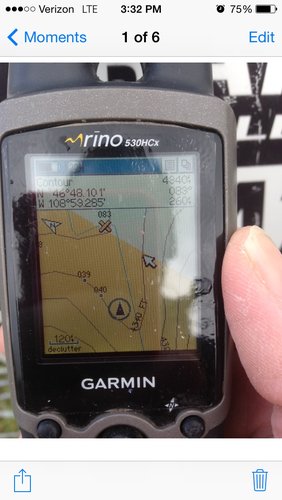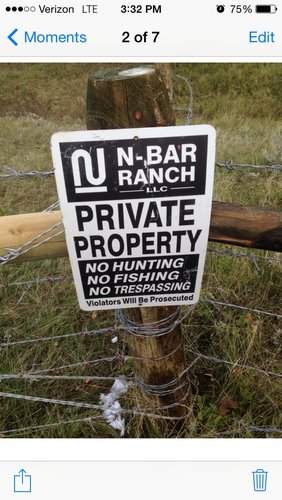pointer, I do totally understand about entering into agreement with Gov. agency and the need to do things by the book. The whole question is, do they hold title to the land on which the fence is built? If they do, we sportsmen have to suck it up and leave them be. If they have indeed run over their property line onto public, then they have opened themselves up to all kinds of problems. Someone please show me a law that say's if you own a piece of land adjoining BLM you can't fence it in any fashion you see fit. (as long as the fence is on your property.
I don't see anyone stating that a private landowner is restricted from doing anything they want on their own private land, so long as it is in compliance with the law. I don't care what they do on their private land, so long as they are in compliance with all laws and all agreements they have entered into for grazing allotments with the BLM.
If the LE show up and they find everything is fine, not much can be done about it. We carry on and continue to hunt it as we always have, knowing the hunting will be impacted by the actions on private land. It would not be the first time public hunting is impacted by actions on private land.
I think the bigger issue, and one worth noting, is the public relations game that the Wilks are/have employed. They made an offer. An offer is usually a starting point. The first offer was considered inappropriate and not accepted. They asked the BLM, a public agency, to entertain their offer. That is a lot different proposition than two private parties entering into a discussion.
Rather than come back with another offer, the decision was made to put up their own website promoting the virtues of what they want to exchange. Nothing wrong with that.
Where the rub comes is the actions/reactions as quick as things start going a little south. This kind of demonstration is made by them for purposes of garnering attention to the issue. Whether it is the kind of attention they want, I'm not sure, but they had to know it would attract attention.
It was obvious to me that whoever was advising them on the original proposal did not provide them a very good service. Whoever gave them that advice was poorly informed of the facts related to the properties in question, access to those properties, historic use of those properties, and the current climate of public hunting access in Montana. Their adviser either did not understand those issues, or just did a terrible job in crafting the proposal.
Now, rather than accepting the reality of the situation and trying to find a workable solution, this is the response. That is fine. It is their land, they can do as they damn well please.
But, if this is how they intend to respond when things don't go exactly as they want, they will find that getting things done in Montana just got a lot harder than it was before. Just a fact of how it works.
And, I know they/their people read this blog, so nothing I say here is something I wouldn't if they were sitting at the table with me.
We've all been involved in proposed deals that had some struggles and challenges. It took a some work and some discussion/negotiation on all sides to get things accomplished. That is the dynamics you accept when you want something held by the public. If you cannot accept the rules laid out for such exchanges and you cannot accept that dealing with the public results in a slow and frustrating process, then maybe you should not propose an exchange to start with.
Remember, this was them proposing something to the BLM. When you do that, you come to the table with the understanding that you are subjecting yourself to the public process that agencies are required to follow.
When people ask for that, then respond this way when they do not get their wishes granted, I think that is worthy of discussion among hunters on this forum and in the media. It is a case that everyone is watching to see how it unfolds.
None of that diminishes the private property rights the Wilks hold. They can do as they damn well please. Yet, they are the ones who asked the BLM to entertain an offer, in doing so, putting themselves in the position of having to deal in the spotlight of public interest.
Their response and actions are watched very closely, as evidenced by this thread and the huge flurry of emails I received on the topic while I was gone. None of this happens in a vacuum. And thank goodness for that.
The beauty of America is the rights and liberties we have, including the private property rights protected by the 5th Amendment. These landowners are well within their rights to do as they please, on any property they own.
Sometimes when people exercise their rights, they do so in a manner that gives others a better perspective of who they really are and the character they display when things don't go as one would like. To me, that response is what is worthy of noting and discussing on this forum.
Carry on ......






